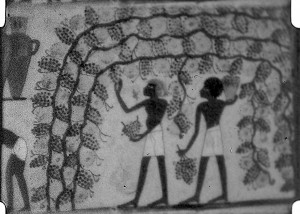
"The Tombs Of The Nobles, 400 ft., 16mm., is distinguished both in its subject matter and technical triumph over seemingly insuperable photographic odds. In it Mr. Hansen has achieved a clear and valuable record of Egyptian art and history as he found them presented on the interior walls of countless Egyptian tombs. Only by a careful placing and manipulation of sheets and mirrors in the cramped space of each tomb was Mr. Hansen able to cast sufficient light from the doorways onto the hundreds of paintings which he photographed. The film's continuity has been planned and edited in a simple, documentary style, adapted for use as an informal lecture subject. Its technical accomplishment seems unparalleled in the annals of amateur filming and has been well employed in recording subject matter entirely different from the general amateur picture." Movie Makers, Dec. 1931, 658.
"Un-staged documentary footage shot and edited by Sallie Wagner. Sallie's description of the film: 'Trading post at Wide Ruins, "Trader Burnt Hat" - Bill Lippincott, Sallie, Antoinette Badgley - mother, baby, Sallie, group of three left to right - Gaddy, John Joe, and ? , Tom Big Gun - raising his arm quickly Hosteen Belahi. Little Woman - captive of [Kit] Carson [survived the Long Walk and Navajo incarceration at Ft. Sumner], John Joe's wife (gold skirt) and daughter, Mary Toddy and John Toddy, young children, Joe Toddy, Nashoshi Begay, Paul Jones in trading post trading with Bill Cousins, wife and child of Tom Big Gun, Lukachuka - also captive of Carson (Blackrock's brother - both medicine men). Navajo Refugee Site "Kinazin" (which means Standing House) near Wide Ruins, Pat Norton inside "Kinazin" ruins, Cliff Ruin in Canyon del Muerto, ceremonial jar washed out by rain, Bill Lippincott - Elvin Jonas and Jack Norton excavating the pot, climbing cliff at Canyon de Chelly - Larry Bell and Doyle Mulligan, Sallie and Bill looking at pictographs below Wide Ruins, pictographs near spring north of trading post, Navajo Fence at Wide Ruins, numerous sunsets'." New Mexico State Archives.
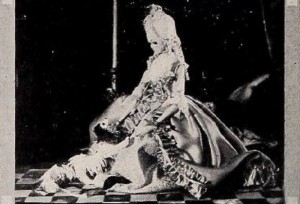
"In Traum Im Karneval, 1000 ft., 35mm., a distinctly new technique in cine puppet drama has been beautifully and conclusively demonstrated. Working with puppets free of distracting threads and controlled entirely from below the line of camera sight, Dr. Goldschmidt has brought to his film the fluidity and cinematic smoothness essential to a genuine photoplay. Gone are the proscenium arch and the unavoidably static feeling of photographed "theatre." Here the camera has moved freely from near shot to closeup or semicloseup as the action demands. Inserted scenes from real life, used with symbolism significant to the mood of the story, have served only to heighten the cinematic illusion, while the unusually graceful miming of the puppets amazes one with a feeling of uncanny and fantastic life. Traum Im Karneval is delicately conceived, sensitively directed and superbly photographed. Of brilliance equal to Dr. Goldschmidt's technique was the unfailing mastery of his collaborator, Richard Teschner, eminent European puppeteer." Movie Makers, Dec. 1931, 685.
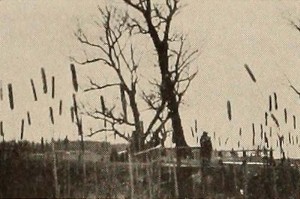
"In Trees, whose subtitle describes it as a picture poem, we find what is generally admitted to be the masterpiece of that superb artist of the cinema, the late Ripley W. Bugbee, whose work so delighted his fellow members of the Amateur Cinema League and whose untimely death took from amateur cinematography one of its finest workers. This film is the realization of what Movie Makers has often counseled — setting film to music, instead of the course usually followed in theatrical pictures of setting music to film. The footage is planned to gear in with the musical setting of Joyce Kilmer's popular verse, but, since that setting is brief, other music, excellently chosen, is added to the scoring. The music of the poem is played once orchestrally, then other selections are offered, and the presentation concludes with a baritone voice singing the musical setting through completely. In this last part of the film, there is admirable synchronism, the scenes illustrating the words very accurately. Within the framework of this mechanism, Mr. Bugbee placed some of the loveliest 16mm. Kodachrome footage that has ever been accomplished. The motion is all that of nature, no persons appearing, but that motion has tempo and rhythm, as well as amazing beauty. There are trees in all kinds of movement, and to them are added scenes of clouds, moving water, grasses, flowers and birds. Without the record accompaniment, one would find, in Trees, Kodachrome footage of the highest order; with the musical addition, there is something that, within its limited scope, has never been bettered." Movie Makers, Dec. 1938, 597, 617.
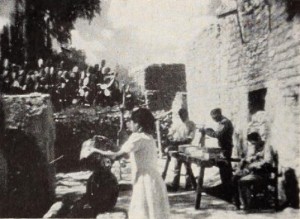
"The vivid pageantry and somnolent landscapes of Mexico assume a new grandeur as filmed by Ralph E. Gray, a cinematographer who has long been recognized as one of the most accomplished amateurs on the continent. The land of contrasts and contradictions is beautifully presented in Typical Times in the Tropics, for here is one of the few travel films that ignore the tourist penchant for flashy trivia, to reveal the spirit of a people and the pictorial splendor in terms of lasting values. Mr. Gray has lived in Mexico long enough to recognize what is really significant; consequently, his film — for all its 1400 feet — seems to be a distillation of the unique charm which continues to attract Americans on vacation. The Mexican's strange blend of religious sincerity and garish ceremony is evidenced in a ritual filmed in Cholula, in which the local livestock — besmeared with gaudy paints and dyes — are presented for the blessing of the village priest — to insure the animals' fertility. The bouganvillea and hibiscus that frame the vistas of sleepy Fortin are contrasted with a boisterous Cuernavaca carnival and the hard riding charros of Mexico City. The latter scenes give Mr. Gray an opportunity to display his technical prowess at its best, for his handling of exposure problems in filming sombrero shadowed faces, his revealing closeups of spectators and skillful following of the wild horses and steer roping are proof of his stature as one of our finest amateur filmers. One of Mr. Gray's most valuable assets is a keen eye for detail, whether it be in the embroidery of a shawl or the weird sculpture left in the path of a lava flow. Intelligent use of a polarizing filter heightens the tawny stuccos of the cathedrals and intensifies the architectural detail of the facades and bell towers; and a fine feeling for human interest gives his shots of a Tehuantepec celebration, the Tirada de Frutas, an added opulence. The cliff divers of Acapulco staged some hairbreadth scenes for Mr. Gray, and he has made the sequence even more breathtaking by cutting in shots of the rocky hazards which had to be cleared by these young daredevils. Saving his trump for a fiery finale, this second time Maxim Award winner winds up with a series of frames of Paricutin, smouldering under her own gray vapors. Sustaining interest throughout 1400 feet of film is no mean task, even when abetted by the natural resources of Mexico; but Mr. Gray has met his challenge with a maximum of taste, discrimination and a completely craftsmanlike approach to a subject that has seldom been presented with such polish and vitality." Movie Makers, Dec. 1946, 470-471.
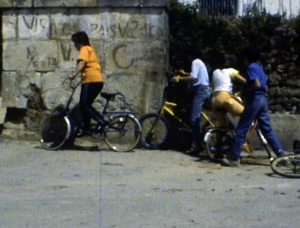
Documental corto sobre el pueblo de Villa de Corres. El filme comienza con varios paisajes de los alrededores y planos de montañas y el río. A continuación se muestra el pueblo, aparecen casas, el río, calles y algunas partes características como el Castillo, el hospital, la iglesia de San Esteban, el bebedero, la fuente , la plaza, etc. También aparecen algunas personas mayores y niños por las calles. Se comenta que es un pueblo con una población de 30 habitantes pero que es uno de los pueblos más longevos de la provincia de Álava.
Short documentary about a town called Villa de Corres. The film begins with several landscapes of the surroundings and shots of the mountains and the river. Then the film shows the town, houses, the river, streets, and some landmarks like the Castle, the hospital, the San Esteban church, the drink fountain, the fountain, the square, etc. Some older persons and children are also seen. It is said that the town only has a population of 30 persons, but that it is one of the longest-living towns in the Alava province.
"Pottery and fashion design, etching and metalwork, sculpting and woodcarving, painting and still life drawing - aspiring young artists and designers in Manchester improve their skills while pursuing their career dreams in this fascinating and beautifully filmed record from the inter-war years, shot by their fellow School of Art student George Higginson." (BFI Player)
"When The Red Gods Call, 1600 ft., 16mm., is noteworthy as an exceptional record of wild animal life in the great north woods and was made by W. H. Dodge. With infinite patience and camera skill, Mr. Dodge succeeded in recording the natural movements of moose, bear and other wild animal subjects and his photography under difficult conditions, as exemplified in this film, is exceptional. The results gained in many of the telephoto shots and in shots taken with fast lenses and superspeed film were made possible by a specialized cine outfit, developed by the maker of the film himself. Beautiful nature shots, as well as exceptional night and flare work, add to the original qualities of this film." Movie Makers, Dec. 1931, 685-686.
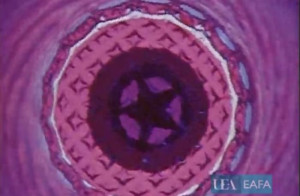
Animated film of windmills and revolving multi-coloured shapes and patterns, in time to the tune 'Windmills of My Mind' (EAFA)
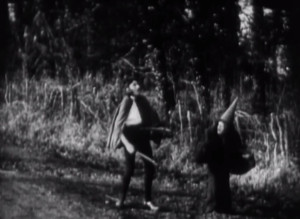
"Possibly the first student film ever made, this tale of a magical instrument was shot by the newly formed Cambridge University Kinema Club. While the film is a daft comedy, its creators went on to careers straight from a thriller: director Peter Le Neve Foster spent years filming behind the Iron Curtain, his assistant director Cedric Belfrage was a suspected Russian spy, and Pembroke Stephens - the lovesick youth - was killed in 1937 while reporting on the Japanese invasion of China." (BFI Player)
Total Pages: 15